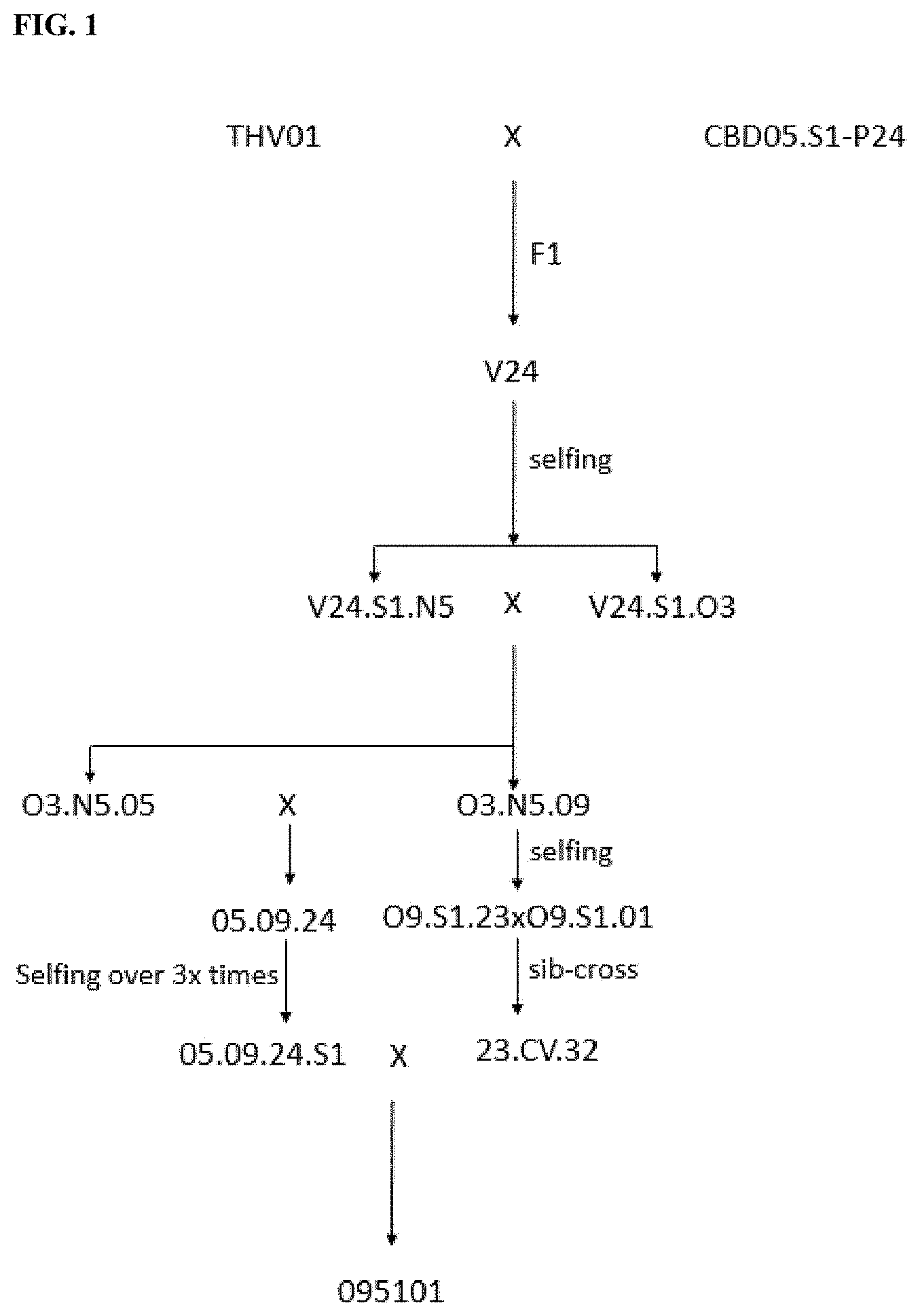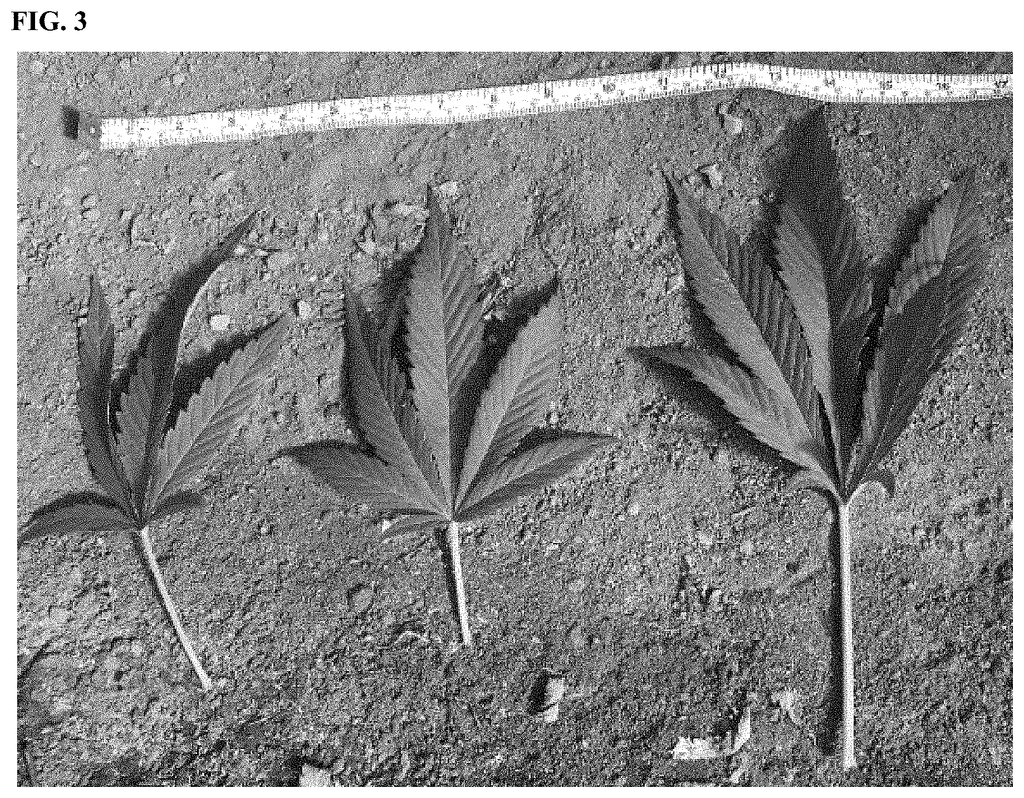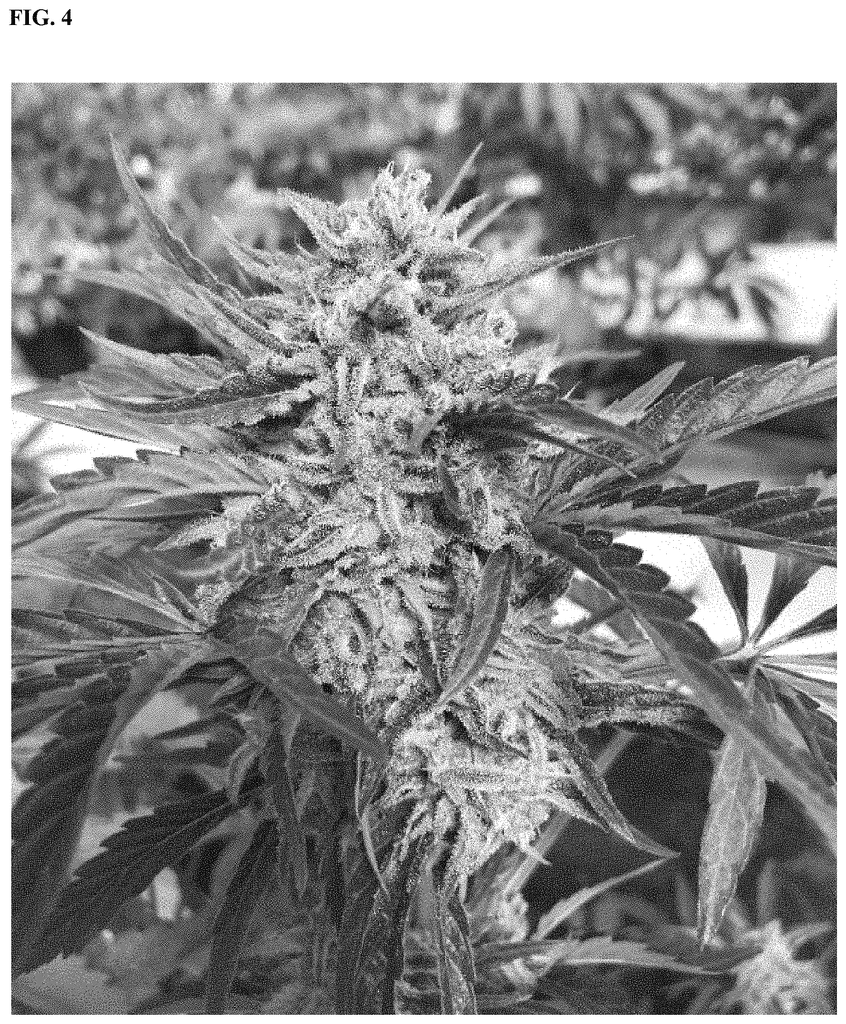Invented by Mark Anthony LEWIS, Steven Robert Haba, BIOTECH INSTITUTE LLC
One of the main reasons for the popularity of “095101” is its versatility. It can be grown both indoors and outdoors, and is resistant to many common pests and diseases. This makes it an attractive option for farmers looking to grow hemp for commercial purposes.
In addition to its versatility, “095101” is also known for its high yields. This means that farmers can produce more hemp per acre, which can translate to higher profits. The high CBD content of this cultivar also makes it a valuable crop for those in the CBD industry, as it can be used to produce a variety of CBD products.
Another factor contributing to the popularity of “095101” is the increasing demand for CBD products. As more people become aware of the potential health benefits of CBD, the demand for CBD products is expected to continue to grow. This means that there will likely be a steady demand for high-quality hemp cultivars like “095101” in the coming years.
Overall, the market for “095101” is looking very promising. With its high yields, versatility, and high CBD content, this cultivar is well-positioned to meet the growing demand for CBD products. As the hemp industry continues to evolve, it will be interesting to see how “095101” and other cultivars like it continue to shape the market.
The BIOTECH INSTITUTE LLC invention works as follows
The present disclosure discloses a new, distinct and unique hemp cultivar with the designation?095101?” The present disclosure is related to the seeds of the plant ‘095101,? Plants and parts of the plant are also disclosed?095101,? The hemp plant is a hybrid plant that can be produced by crossing it with other cannabis plants or the hemp plant itself. The disclosure also relates to the morphological and physiological characteristics of the new and distinct hemp cultivar, as well as its uses.” “The disclosure also relates to the morphological, physiological and uses of the new and distinctive hemp cultivar.
Background for Hemp cultivar named ?095101?
Cannabis” is a genus that contains at least three flowering species: Cannabis sativa and Cannabis indica. This is determined by plant phenotypes as well as secondary metabolite profiles. Industrial hemp is also known as cannabis, and it is a strain of cannabis that has been specifically grown for industrial purposes. The United States considers Cannabis hemp if it has less than three-tenths (or 0.3%) of tetrahydrocannabinol at harvest maturity. High levels of CBD (cannabidiol) can be found in hemp plants. This can be used in a wide range of consumer goods including drinks, food, and dietary supplements.
Farmers still face challenges in hemp production. Although highly desired, feminized seeds with high CBD-producing lines are not widely available.
There is a constant need for new varieties of hemp to meet the growing demand in fiber and CBD-based products.
This disclosure is about a new, distinctive and unique hemp cultivar known as?095101.? The?095101′ is produced in some embodiments by a controlled-cross between two parent varieties; 23.CV.32 and 05.09.24.51. The?095101? is produced through a controlled cross between two parent types; 23.CV.32, and 05.09.24.51. In other embodiments the?095101′ is derived from a Cannabis hybrid with mixed background.” In other embodiments, the?095101?
The inventors reproduced?095101? The?095101? cultivar was reproduced through strategic cross-breeding and selections of proprietary lines. The?095101?” The?095101?
The present disclosure discloses a new and distinct hemp variety, designated as ‘095101’. The present disclosure is applicable to hemp varieties ‘095101’, the plant or part of hemp varieties ‘095101’, the plant cell of hemp types 095101, and the plants, plant parts, or plant cells that have all the physiological or morphological features of hemp varieties?095101. The present disclosure relates to the seeds of hemp variety?095101?, to the plants or parts of hemp variety ‘095101’, to the plant cells of hemp variety?095101?” and/or plant or plant part or cell having all of physiological and morphological features of hemp varieties 095101″ The NCMA No. 202202005 includes, but is not limited to, the significance of the results at the 5% level, when the plants are grown under the same conditions.
The present disclosure is about methods of producing hemp plants and/or seeds by crossing the hemp var.?095101? With itself or with another cannabis and/or a hemp plant. Another aspect is hybrid hemp plants and hemp seeds that are produced by crossing a hemp variety?095101?” “With a cannabis or hemp plant.
Another aspect of this disclosure is directed at a method for producing a cannabinoid-rich extract, which involves contacting plants from the hemp variety “095101” with a solvent or heat and then producing the cannabinoid-rich extract.” “Another aspect of the present disclosure is also directed to a method of producing a cannabinoid extraction, which comprises contacting plants from the hemp variety?095101? with a heat or solvent and producing he cannabinoid emulsion.
In certain embodiments, this disclosure teaches a plant, plant part or plant cell from the hemp plant variety designated ‘095101’, wherein the seed of that variety has been deposited with NCMA No. 202202005. The present disclosure may teach that the plant component is an inflorescence or a flower.
In some embodiments of the present disclosure, a hemp plant, a part of a plant, or a cell of a plant, has all the physiological and morphological features of the hemp variety designated “095101”? The Tables 1-5 list the characteristics of the hemp plant variety designated?095101′. The present disclosure includes, but is not limited to the following: the results of the tests at the 5% significance levels when the plants are grown under the same conditions. The present disclosure, in some embodiments teaches a cannabis plant or plant cell or part thereof that has all the physiological and morphological features of the hemp plants of the present disclosure.
The present disclosure teaches, in some embodiments, a hemp plant or a part of a hemp cell or plant thereof that has all the physiological and morphological features of the hemp variety designated ‘095101’, wherein the said variety was deposited as NCMA No. 202202005.
In certain embodiments, the current disclosure teaches tissue cultures of regenerable cell produced from a plant, plant part, or plant cell in the present disclosure. A new plant regenerated by the tissue culture will have all the morphological, physiological, and morphological characteristics of the hemp variety designated as?095101?” “In some embodiments, the present disclosure teaches a tissue culture of regenerable cells produced from the plant, plant part or cell of this disclosure. A new plant regenerated from the tissue culture has all morphological and physiological characteristics as hemp variety designated?095101? When grown under similar environmental conditions, the plants listed in Tables 1-5 (and/or deposited under NCMA No. In certain embodiments, this disclosure teaches the regeneration of a hemp plant from the tissue cultures of the disclosure. This plant has all of the morphological, physiological, and other characteristics of hemp. In certain embodiments, the disclosure teaches a plant regenerated by tissue culture. The regenerated plant will have all the characteristics of hemp variety?095101′, wherein seeds of this variety were deposited under NCMA no. 202202005.
In some embodiments, this disclosure teaches a way to produce a hemp seed. This includes self-planting the hemp plant and harvesting the resulting hemp seed. The present disclosure may also teach how to make a hemp seed using the method described in the present disclosure.
In certain embodiments, the present discloses a method of producing a hemp seed by crossing the hemp plant described in the present disclosure with another distinct plant. The present disclosure may teach an F1 hemp plant that is produced using the method of this disclosure in some instances. The present disclosure may teach an F1 hemp plant or a part of a plant cell, depending on how it is grown.
In some embodiments, this disclosure teaches how to produce a hemp variety derived from ‘095101,’ The present disclosure includes: a. crossing the plant in the current disclosure with another plant or with itself to produce progeny seeds; b. growing the progeny seeds to produce a new plant, and then crossing that plant with a second one to produce more progeny seeds; and, optionally, c. repeating step b. to produce the hemp derived from variety?095101?
In some embodiments, this disclosure teaches a way to produce a hemp variety derived from a variety ‘095101’, which includes crossing a variety derived hemp with a variety derived hemp. With a plant having a different genotype, you can produce seeds of a hybrid hemp plant that is derived from the variety “095101”.
In some embodiments, this disclosure teaches how to produce a hemp variety named ‘095101’ by propagating a cutting of a stock Cannabis. The stock Cannabis plant in some embodiments is the result of applying the plant breeding techniques taught herein to “095101”.
In some embodiments, this disclosure teaches a method for producing a Cannabis variety derived from hemp variety?095101′. This method includes: crossing a cannabis stock plant with another Cannabis variety, thus producing the Cannabis variety derived from hemp variety?095101″ In some embodiments the stock Cannabis is a result of applying a plant-breeding technique to ‘095101’.
In some embodiments, this disclosure teaches a way to produce nucleic acid. This includes isolating nucleic acid from the plant, seed, part or plant cell.
In some embodiments the present disclosure teaches hemp plants that have a single locus transformation and otherwise all the morphological, physiological and other characteristics of the hemp plant. When grown under the same environmental conditions. The present disclosure states that in some embodiments the single locus convert confers herbicide resistance to the plant. In some embodiments the present disclosure teaches the single locus is a gene or nucleotide that has been artificially mutated. In some embodiments of the present disclosure, it is taught that the single locus transformation is a gene or nucleotide sequence that has been artificially mutated through the use breeding techniques.
In some embodiments, this disclosure teaches the cultivation of hemp designated as?095101′. As described and detailed in this disclosure.
Click here to view the patent on Google Patents.








